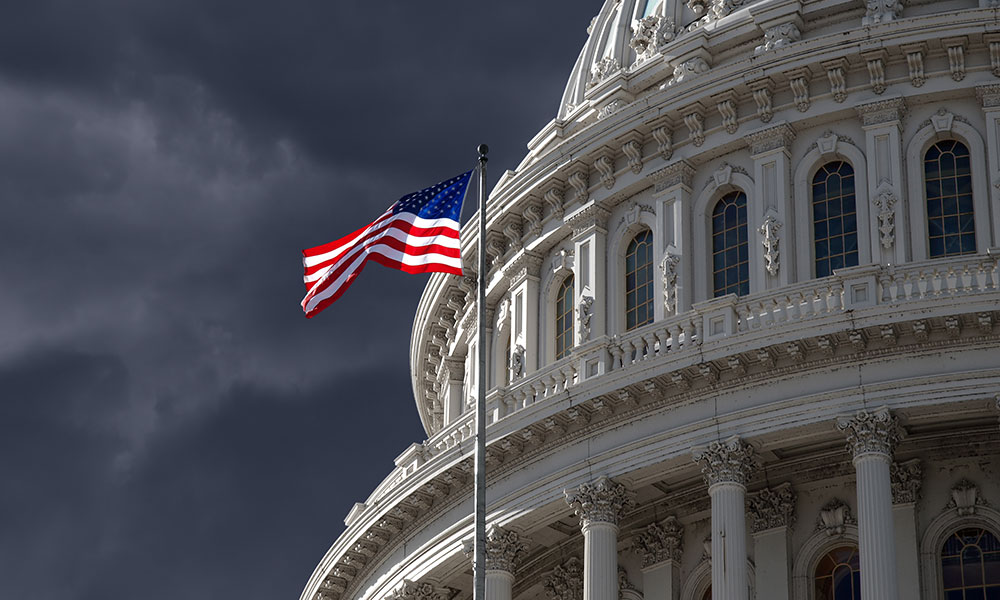
Four Tips for Leading on Advocacy Amid Uncertainty
Polarizing politics have made it harder for many associations to lobby, and many fear blowback from members on political stances. But there are still opportunities to hone your message and get it heard.
It’s hard to know in the long run how much of an impact the current White House administration will have on association strategy. But there’s little question that right now the amount of political noise is so persistent, and so loud, that it’s become more difficult for associations with more niche agendas to get heard.
Matthew Zablud, a partner at the Beekeeper Group, a Washington, D.C. advocacy firm that works with association clients, says he’s seen seen a chilling effect. “There’s been a lot of action from protests,” he says, “but there’s been very little activity in terms of campaigns focused on Hill audiences. This [White House] administration, whether you like it or don’t, is very different, and that difference is creating a level of uncertainty.”
We’ve got to start telling a story through infographics, photos, and video.
Because the political environment is so polarized, Zablud says, many associations have dialed back their communications for fear of stoking politicized anger from their membership. But though the environment is more complicated—if not outright confusing—he suggests that there are ways for associations to take advantage of the disruption, especially entering a midterm year in 2018. Here are few trendlines that Zablud points to for associations to consider.
1. Gather stories. Different associations will have different advocacy agendas, but if members are speaking out on issues relevant to advocacy goals, Zablud recommends making an effort to get their stories recorded, especially on video. “These associations need to take advantage of the fervor right now, and not just have form e-mails and petitions signed,” he says. “Record everything and get as much video as you possibly can, so you you have all that stuff in the can. So when the issue has died down, or if they haven’t been able to use it right now because things are too hot, they can bring those testimonials back into the fray.”
2. Spread the word in multiple ways. It’s commonly accepted that associations can better influence legislators with direct and personal shows of strength—the phone calls, the appearance at town halls, the legislative fly-ins. Zablud doesn’t discount that, but also argues that legislative staffs are looking to see how pervasive a message is across multiple platforms—and question its legitimacy if it only emerges on one or two. So look for ways to spread the word native to each platform you use. “We’ve got to start telling a story through infographics, photos, and video,” he says. “We need it because social media is basically requiring us to do it anyway. But we also need it because it forces us to find an emotive way of passing on our key messaging points. You’ll automatically get a better message when you’re able to to create an image rather than a series of bullet points in an email.” (In June, former Obama administration spokesperson Josh Earnest recommended similar breadth of messaging to Associations Now.)
3. Take a close look at your data—and experiment based on it. Associations that sense their members shifting their political attitudes many not necessarily have to launch an expensive survey to figure out who their members are and better market to them, Zablud says. “Associations already have a huge amount of data, particularly when you combine what they have on the membership side plus the advocacy side,” he says. “Sometimes the problem is that they’re not communicating with each other.” A close look at member databases, plus a look at voting records, can provide some insights, he says; so can some straightforward A-B testing of advocacy emails. “I genuinely believe that’s where most associations fail,” he says. “They gather all the data, they might do all the surveys, but they don’t pay attention to it. And they just go back and run the old campaigns.”
4. Unusual times can make for unusual—but valuable—relationships. Because the political environment is so disrupted, Zablud says, opportunities for partnerships have emerged that might have been unthinkable in past years. “It’s unclear whether Trump will necessarily care whether it’s Republicans or Democrats who win next year,” he says. “That may present some interesting policy challenges. We may see some very interesting strange-bedfellow scenarios where groups that you wouldn’t necessarily think were politically aligned might find themselves working together. I would be telling associations now to go out and look for groups they wouldn’t normally have combined with on various issues, particularly if it’s a group that you know the president has some interest in.”
How has your advocacy messaging changed in 2017, and how do you anticipate changing it (if at all) in 2018? Share your thoughts in the comments.
(trekandshoot/iStock/Getty Images Plus)






Comments